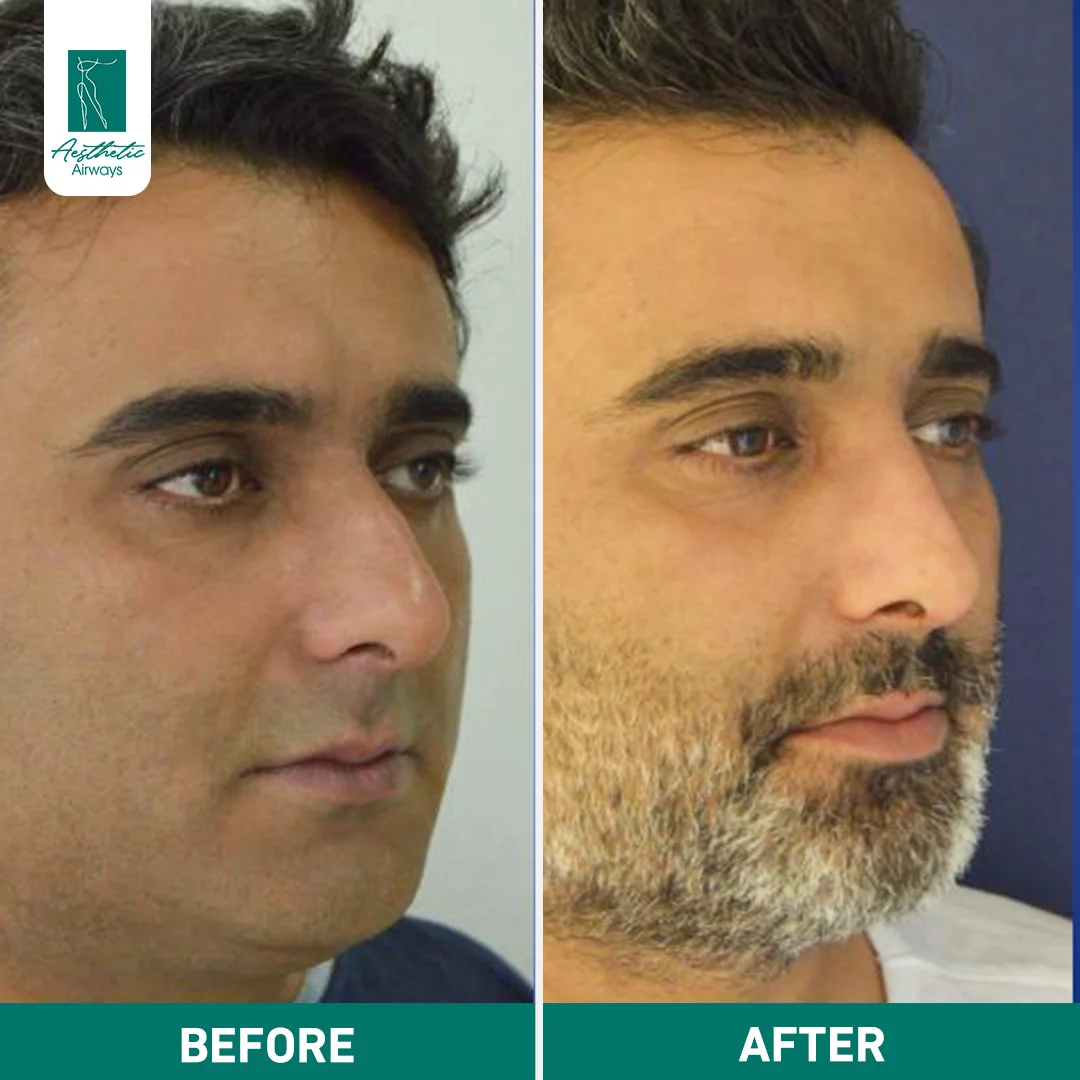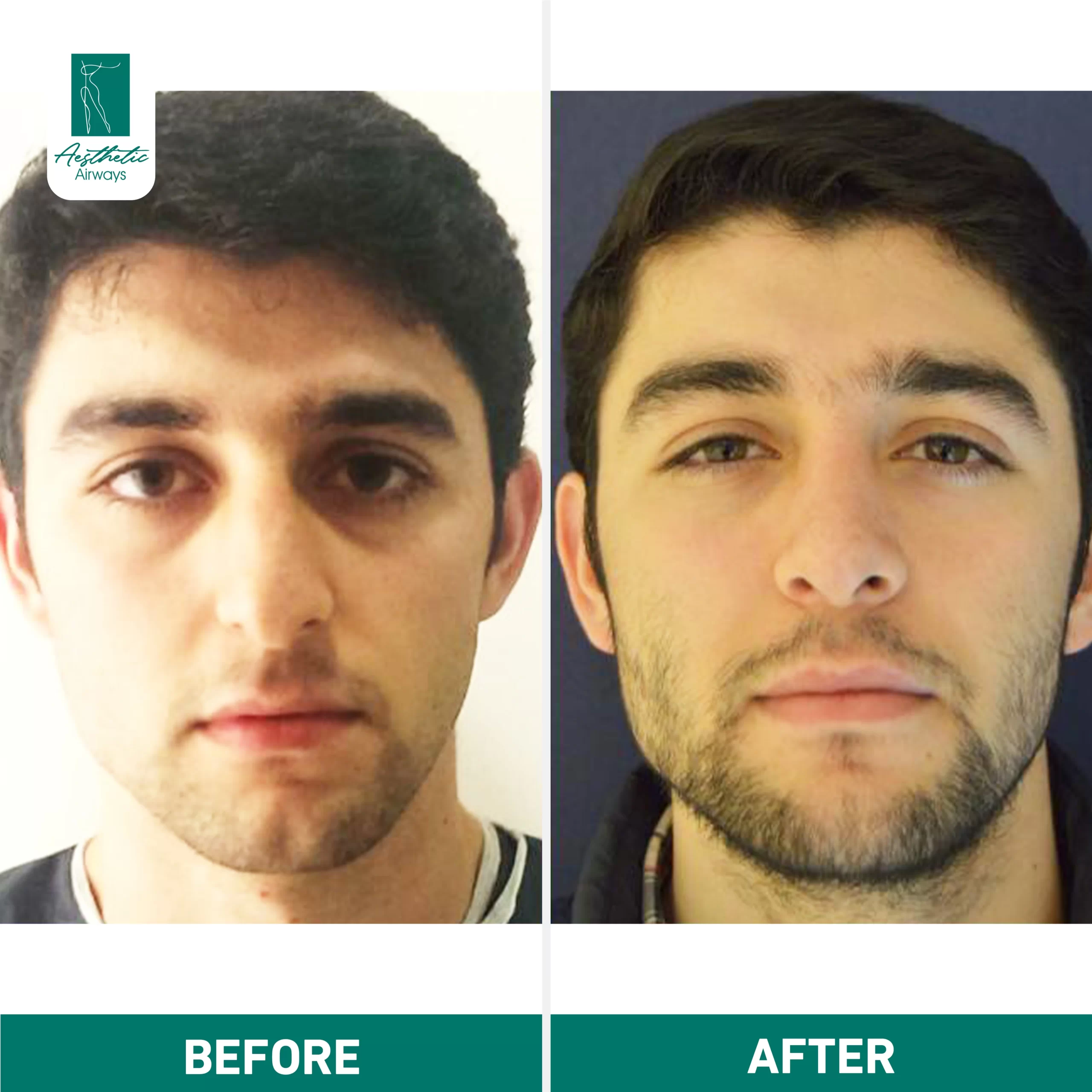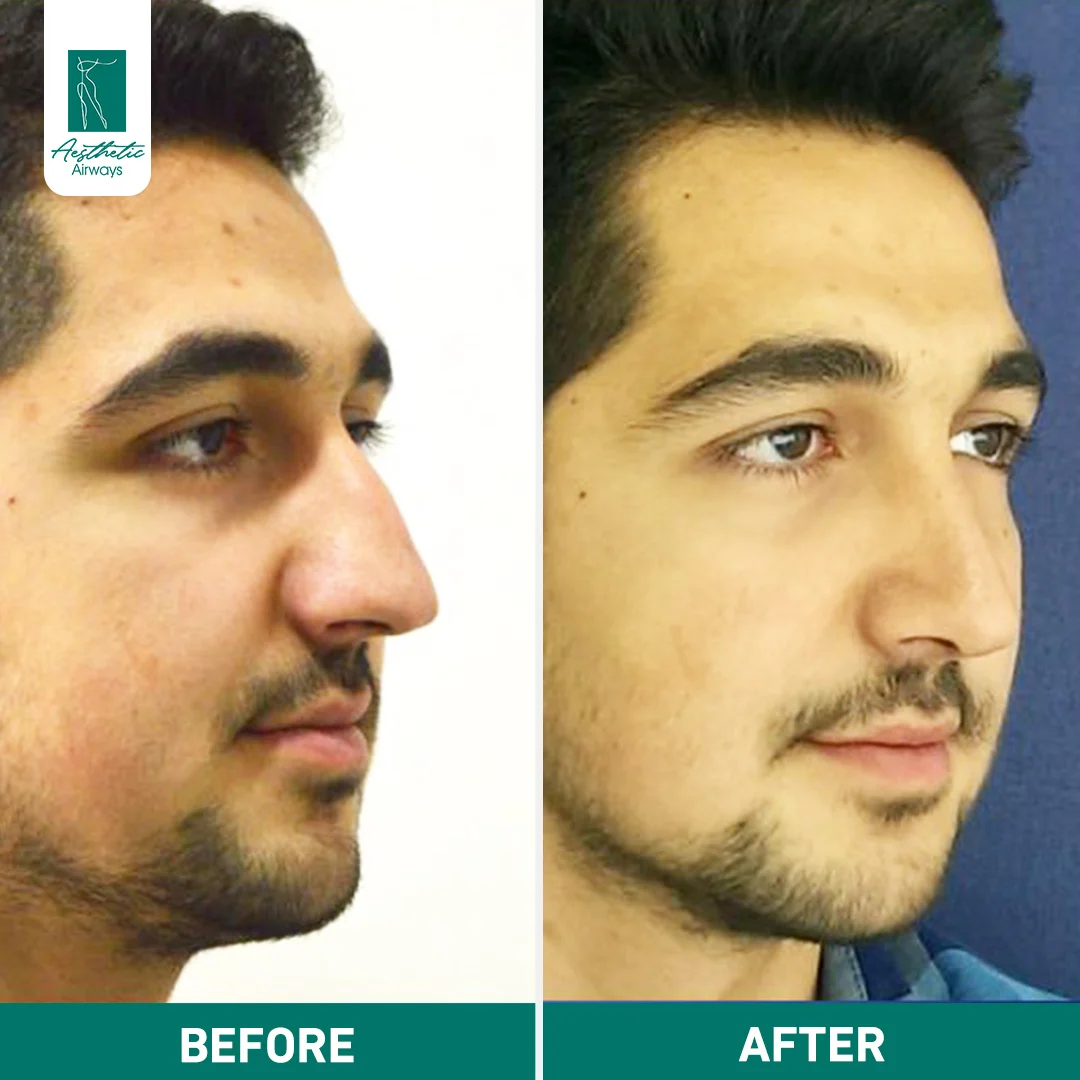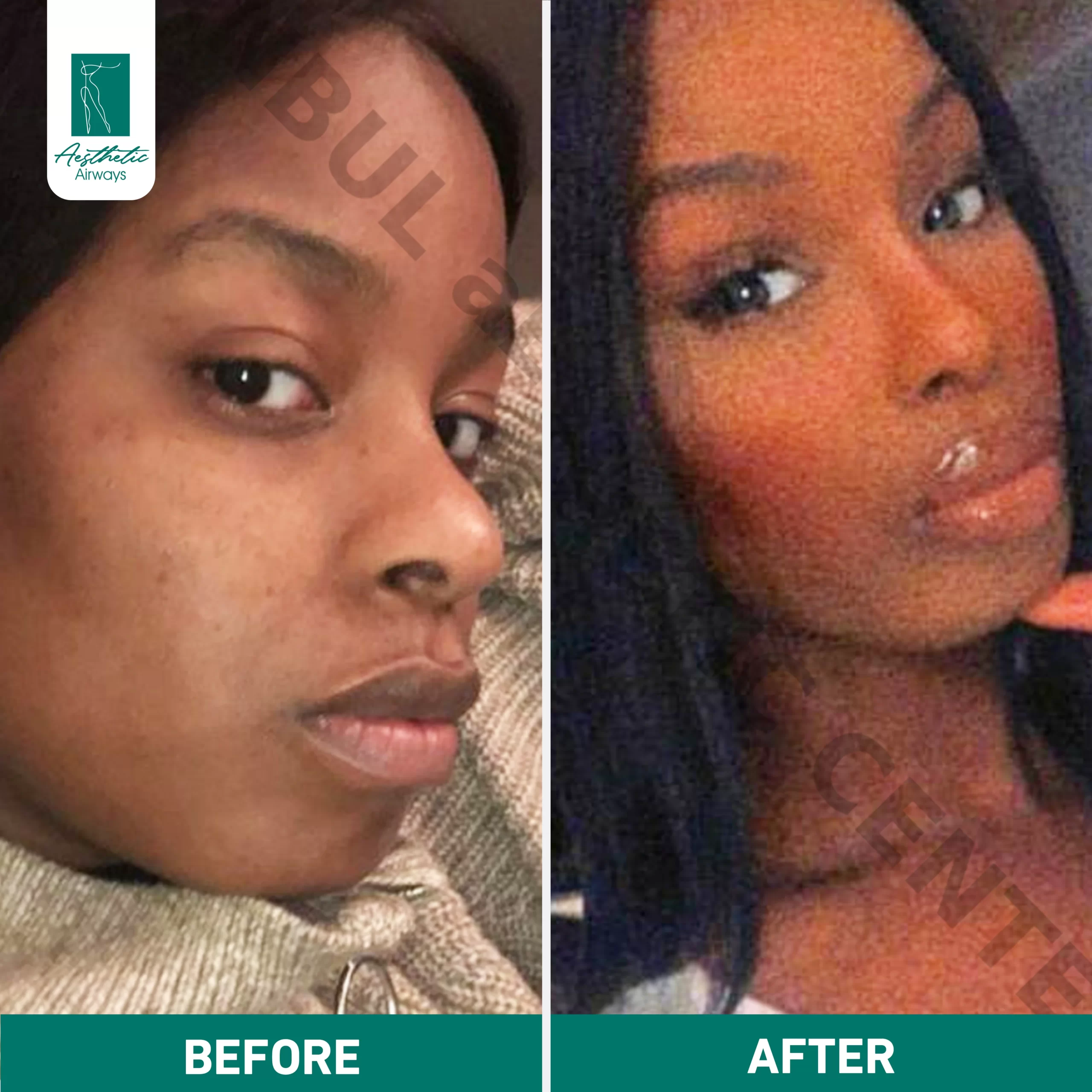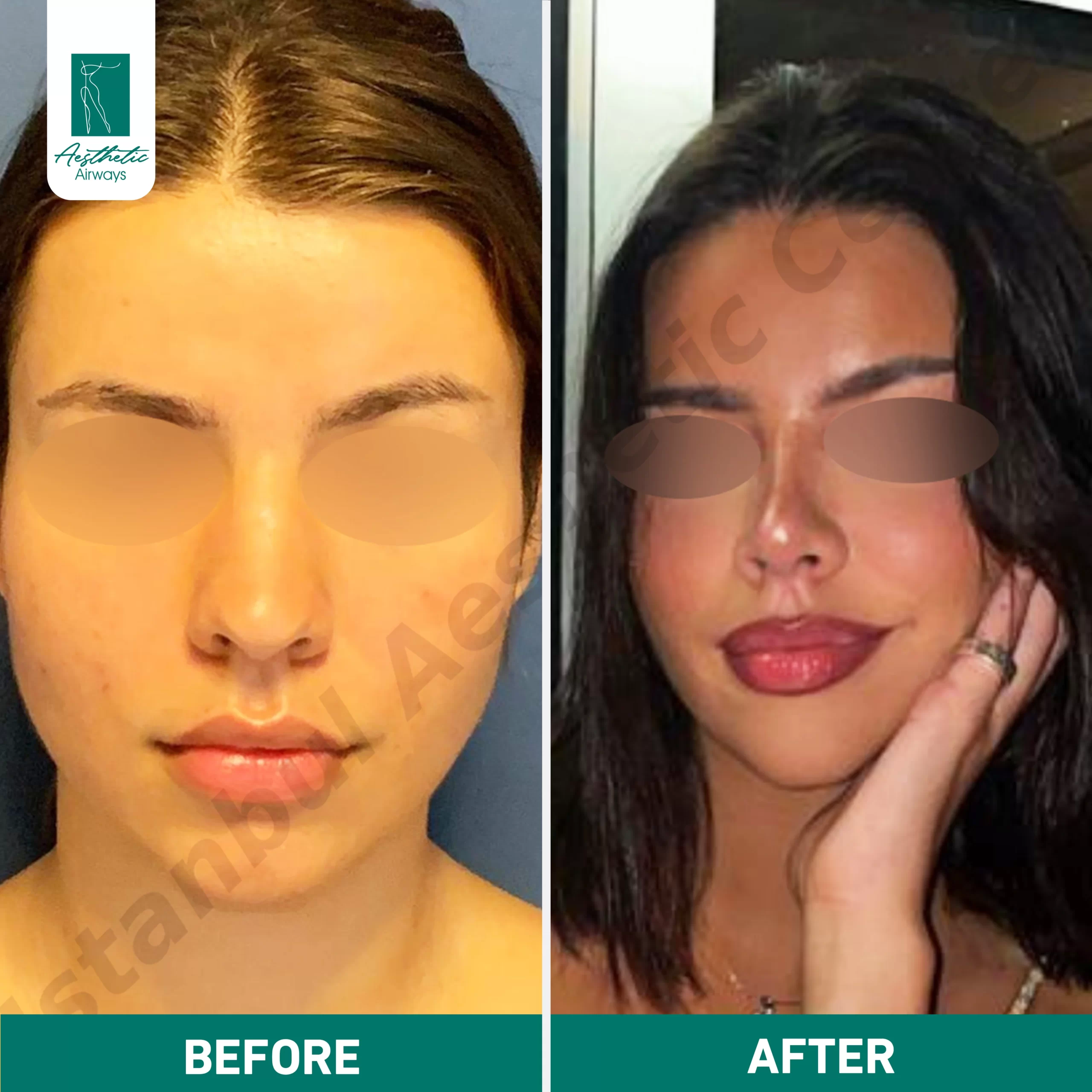Nose surgery
Contact us on Whatsapp for a free quote and consultation from our medical professionals.
What is Rhinoplasty Surgery (nose job) ?
Rhinoplasty, commonly known as a nose job, is a surgical procedure that aims to improve the appearance and/or function of the nose. This procedure can involve making changes to the size, shape, and/or position of the nose to enhance its overall appearance or improve breathing function.
During the procedure, the surgeon may make incisions either inside the nostrils or across the base of the nose to access the underlying bone and cartilage. They can then reshape and modify the structure of the nose by adding or removing tissue as needed. The skin is then re-draped over the newly shaped structure to create the desired appearance.
Rhinoplasty can be done for purely cosmetic reasons, such as to improve the symmetry or proportion of the nose to enhance facial harmony. It can also be done for functional reasons, such as to correct breathing problems caused by a deviated septum or other structural issues. In some cases, the procedure may be performed for both cosmetic and functional reasons.
Rhinoplasty is a complex surgical procedure that should only be performed by a highly skilled and experienced surgeon. As with any surgical procedure, there are risks and potential complications involved, so it is important to thoroughly discuss the procedure and its risks with a qualified surgeon before deciding to undergo surgery.


Benefits of Rhinoplasty
Rhinoplasty, or nose surgery, can offer a number of benefits both cosmetic and functional. Some of the key benefits of rhinoplasty include:
Improved Appearance: Rhinoplasty can improve the appearance of the nose by addressing issues such as a crooked or asymmetrical nose, a prominent bump, a wide or narrow nose, or a drooping or bulbous tip.
Enhanced Facial Harmony: By improving the appearance of the nose, rhinoplasty can also enhance the overall harmony of the facial features, creating a more balanced and aesthetically pleasing appearance.
Improved Breathing: In cases where a deviated septum or other structural issue is causing breathing problems, rhinoplasty can be used to correct the underlying issue, improving breathing function and quality of life.
Improved Confidence: Many people feel self-conscious about the appearance of their nose, and rhinoplasty can offer a significant boost in confidence and self-esteem by improving the appearance of the nose.
Correction of Birth Defects or Trauma: Rhinoplasty can be used to correct birth defects such as a cleft palate or to address issues caused by trauma, such as a broken nose.
It is important to note that the specific benefits of rhinoplasty will vary depending on the individual case and the specific goals of the surgery. Consulting with a qualified surgeon can help determine whether rhinoplasty is the right choice for achieving your goals.
Types of Rhinoplasty
There are several different types of rhinoplasty, each with its own techniques and goals. Some of the most common types of rhinoplasty include:
Open Rhinoplasty: In an open rhinoplasty, the surgeon makes an incision on the columella (the tissue between the nostrils) and lifts the skin to access the underlying bone and cartilage. This approach provides better visibility and control for the surgeon, making it a good choice for more complex or extensive procedures.
Closed Rhinoplasty: In a closed rhinoplasty, the surgeon makes all incisions inside the nostrils, which allows for a more discreet and hidden scar. This approach is typically used for less complex procedures.
Revision Rhinoplasty: Revision rhinoplasty is performed on patients who have previously undergone a rhinoplasty procedure but are not satisfied with the results. The goal is to improve the appearance and function of the nose while addressing any issues caused by the previous surgery.
Ethnic Rhinoplasty: Ethnic rhinoplasty refers to rhinoplasty procedures that are specifically tailored to the unique characteristics of different ethnicities, such as African American, Asian, or Middle Eastern patients. The goal is to maintain the patient’s ethnic identity while improving the overall appearance of the nose.
Functional Rhinoplasty: Functional rhinoplasty is performed to improve the function of the nose, such as correcting a deviated septum, reducing nasal congestion, or addressing other breathing problems.
It is important to discuss the different types of rhinoplasty with a qualified surgeon to determine which approach is best suited to your individual needs and goals.
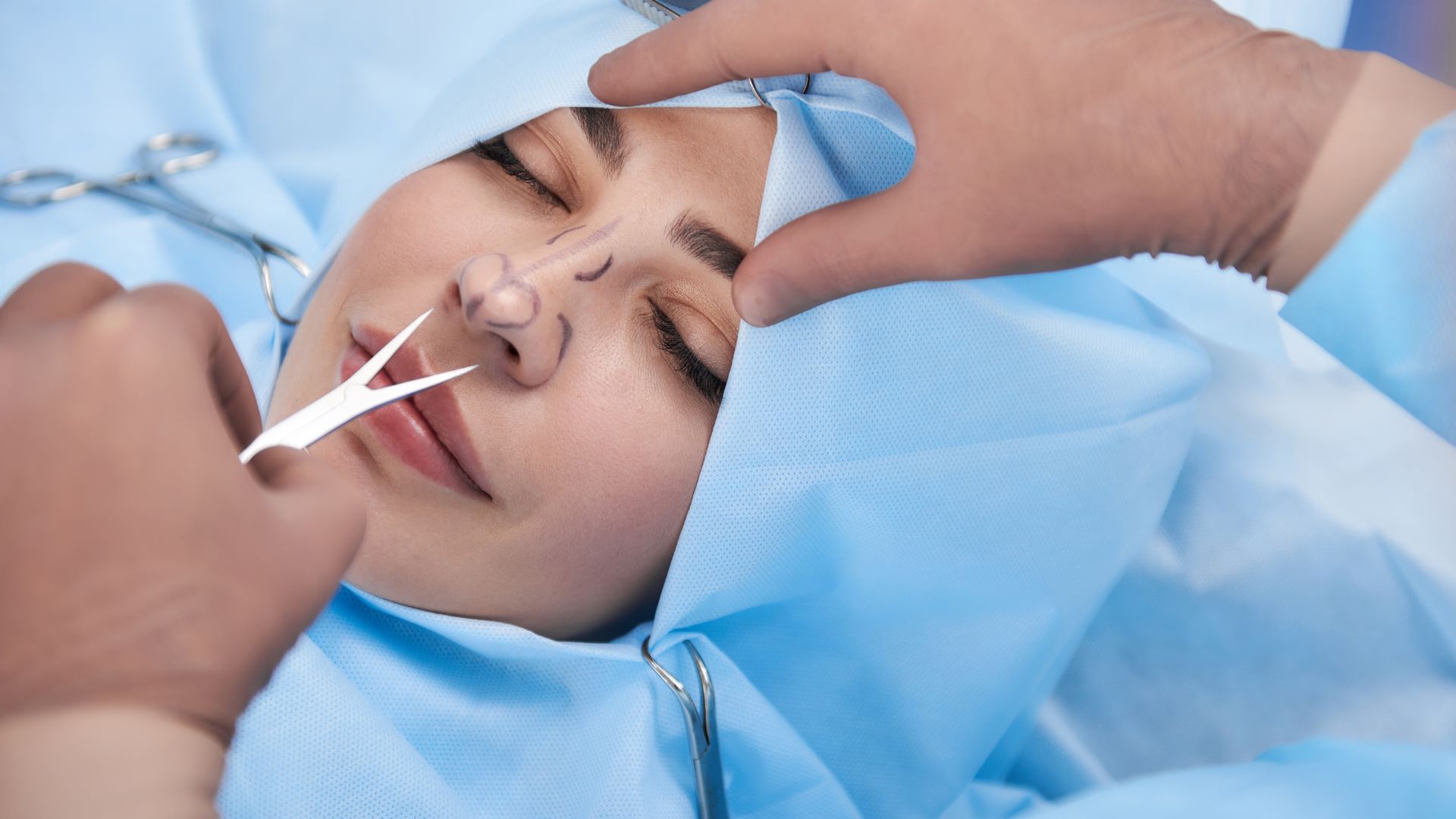

Restore Your Confidence with a Rhinoplasty (Nose reshaping)
Rhinoplasty, also known as nose reshaping, is a surgical procedure that can restore confidence in individuals who are self-conscious about the appearance of their nose. By altering the size, shape, and/or position of the nose, rhinoplasty can improve facial harmony and create a more aesthetically pleasing appearance. Here are some ways rhinoplasty can help restore confidence:
Improving Appearance: Rhinoplasty can address a variety of aesthetic concerns, such as a large or crooked nose, a prominent bump, or a drooping or bulbous tip. By creating a more balanced and proportionate appearance, rhinoplasty can improve self-confidence and self-esteem.
Correcting Functional Issues: In addition to cosmetic concerns, rhinoplasty can also address functional issues that may be causing breathing problems or other discomfort. Correcting these issues can improve overall health and well-being, leading to greater confidence.
Personalized Results: A skilled and experienced surgeon can tailor the rhinoplasty procedure to each patient’s individual needs and goals, ensuring that the results are customized and natural-looking. This personalized approach can help individuals feel more comfortable and confident in their appearance.
Long-lasting Results: Rhinoplasty offers long-lasting results, which can help boost confidence and self-esteem over the long-term. Many individuals who undergo rhinoplasty report feeling happier and more confident in their appearance for years after the procedure.
Overall, rhinoplasty can be a transformative procedure that can help restore confidence and improve overall quality of life. It is important to choose a qualified surgeon with extensive experience in rhinoplasty to ensure the best possible results.
Free Quote
What Can I Expect During Nose Surgery ?
Nose surgery, also known as rhinoplasty, can be performed using different techniques, depending on the patient’s specific needs and goals. Here is a general overview of what you can expect during nose surgery:
Anesthesia: Nose surgery is typically performed under general anesthesia, which means you will be unconscious throughout the procedure. In some cases, local anesthesia with sedation may be used instead.
Incisions: The surgeon will make incisions either inside the nostrils or on the outside of the nose, depending on the type of rhinoplasty being performed. This allows access to the underlying bone and cartilage.
Reshaping the Nose: The surgeon will then reshape the nose by removing or adding bone and cartilage, as needed, to achieve the desired appearance. The skin is then redraped over the new nasal framework.
Closing the Incisions: Once the reshaping is complete, the surgeon will close the incisions using sutures or surgical tape. A splint or cast may be placed on the nose to help support and protect the new shape.
Recovery: After the surgery is complete, you will be monitored in a recovery room until the anesthesia wears off. You will likely experience some pain, swelling, and bruising around the nose and eyes for several days or weeks following the procedure. It is important to follow all post-operative instructions from your surgeon to ensure a smooth and successful recovery.
Overall, nose surgery is a safe and effective way to improve the appearance and/or function of the nose. However, it is important to choose a qualified and experienced surgeon to perform the procedure and to have realistic expectations for the results.

How Much Does A Nose Job Cost ?
The cost of a nose job, or rhinoplasty, can vary depending on a number of factors, such as the surgeon’s experience, geographic location, type of anesthesia used, and the extent of the procedure. Here are some general cost ranges to give you an idea:
Basic Rhinoplasty: A basic rhinoplasty procedure can cost between $3,000 and $8,000. This typically involves minor reshaping of the nose and is often performed as an outpatient procedure.
Complex Rhinoplasty: A complex rhinoplasty procedure can cost between $8,000 and $15,000 or more. This type of rhinoplasty involves more extensive reshaping and reconstruction of the nose and may require a longer recovery time.
Revision Rhinoplasty: Revision rhinoplasty, which is performed to correct issues from a previous rhinoplasty procedure, can be more expensive due to the increased complexity of the surgery. Costs can range from $8,000 to $20,000 or more.
It is important to note that these are just general cost ranges and the actual cost of a nose job can vary widely depending on the specific factors mentioned above. In addition, many insurance plans do not cover the cost of cosmetic rhinoplasty, but may cover the cost of functional rhinoplasty if it is medically necessary. It is recommended to consult with a qualified surgeon to discuss the specific costs associated with your individual situation.
Our patients Before/After
Leading Rhinoplasty or “Nose Job” surgery in Turkey with Aesthetic Airways
Turkey has become a popular destination for medical tourism, including cosmetic procedures such as rhinoplasty. The country has many experienced and skilled surgeons who specialize in nose surgery and offer high-quality care at a lower cost compared to many other countries.
One important consideration when choosing a surgeon or clinic for rhinoplasty in Turkey is to ensure that they are accredited by the Turkish Ministry of Health and that the surgeon is board-certified. It is also recommended to research the clinic’s reputation, read reviews from previous patients, and schedule a consultation with the surgeon to discuss your individual needs and goals.
Aesthetic Airways is a clinic in Turkey that specializes in rhinoplasty and other facial plastic surgery procedures. They have a team of experienced and board-certified surgeons who use advanced techniques and technology to achieve natural-looking results. However, it is important to thoroughly research and consider all options before choosing a specific clinic or surgeon for your rhinoplasty surgery.
Complete Your Transformation with Rhinoplasty Surgery
Rhinoplasty surgery, commonly referred to as a “nose job,” can help to improve the appearance of the nose and enhance facial harmony. The procedure can be used to correct a range of cosmetic issues, including a crooked or asymmetrical nose, a bulbous or drooping tip, a hump or bump on the bridge of the nose, or a nose that is too large or too small in proportion to the rest of the face.
Rhinoplasty surgery can also be used to correct functional issues with the nose, such as breathing problems caused by a deviated septum or other structural abnormalities.
The procedure typically takes several hours and is performed under general anesthesia. The surgeon will make incisions either inside the nostrils or on the outside of the nose, depending on the specific technique used. They will then reshape the nose by removing or adding bone and cartilage as needed. Once the reshaping is complete, the incisions are closed with sutures or surgical tape, and a splint or cast is placed on the nose to help support and protect the new shape.
After the procedure, it is common to experience some swelling, bruising, and discomfort around the nose and eyes. However, most patients are able to return to work and other normal activities within a week or two, although more strenuous activities should be avoided for several weeks.
If you are considering rhinoplasty surgery, it is important to choose a qualified and experienced surgeon who can help you achieve your desired results while minimizing the risks and potential complications associated with the procedure. A thorough consultation with your surgeon can help you determine if rhinoplasty is right for you and what you can expect from the procedure.
Aesthetic Airways is the Turkey’s oldest independent Provider of Rhinoplasty (Nose Job) procedure
Aesthetic Airways has been providing rhinoplasty surgery for several years, and they may have extensive experience and expertise in this field. However, it is important to thoroughly research any clinic or surgeon before choosing to undergo a surgical procedure. This includes checking their accreditation, reading reviews from previous patients, and scheduling a consultation with the surgeon to discuss your individual needs and goals. By doing your due diligence, you can help ensure a safe and successful outcome from your rhinoplasty surgery.
Rhinoplasty (Augmentation)
Rhinoplasty augmentation, also known as nasal augmentation, is a type of rhinoplasty surgery that is performed to enhance the size and shape of the nose. This procedure is often used to address cosmetic concerns such as a nose that is too small or narrow, or to correct defects or asymmetry in the nose.
During a rhinoplasty augmentation, the surgeon will typically use implants or grafts made from materials such as silicone or cartilage to add volume and shape to the nose. The implants or grafts are carefully selected and placed to achieve a natural-looking result that is in proportion with the patient’s other facial features.
The surgery is typically performed under general anesthesia and can take several hours to complete. After the procedure, patients will need to wear a splint or cast on their nose for about a week to help support and protect the new shape. Swelling and bruising are common after the procedure, but most patients are able to return to work and other normal activities within two weeks.
As with any surgical procedure, there are risks associated with rhinoplasty augmentation, such as infection, bleeding, and scarring. It is important to choose a qualified and experienced surgeon who can help minimize these risks and ensure a safe and successful outcome. A thorough consultation with your surgeon can help determine if rhinoplasty augmentation is right for you and what you can expect from the procedure.
Septoplasty is a surgical procedure that is used to correct a deviated septum, which is a condition where the nasal septum, the thin wall that separates the left and right nasal passages, is crooked or misaligned. A deviated septum can cause a range of issues, including nasal congestion, breathing difficulties, and recurrent sinus infections.
During septoplasty surgery, the surgeon will typically make an incision inside the nose to access the septum. They will then carefully straighten and reposition the septum to improve airflow and alleviate any associated symptoms. In some cases, the surgeon may also remove excess cartilage or bone to further open the nasal passages.
The surgery is usually performed under general anesthesia and typically takes about an hour to complete. Most patients are able to go home the same day, but may experience some swelling, bruising, and discomfort for a few days after the procedure. It is important to avoid blowing the nose or participating in strenuous activities for several weeks following the surgery to allow the septum to fully heal.
Septoplasty is generally a safe and effective procedure, but as with any surgery, there are risks and potential complications, such as bleeding, infection, and scarring. It is important to choose a qualified and experienced surgeon who can help minimize these risks and ensure a successful outcome. A thorough consultation with your surgeon can help determine if septoplasty is right for you and what you can expect from the procedure.
Tip plasty, also known as nasal tip surgery, is a cosmetic procedure that is performed to reshape and refine the tip of the nose. This procedure is often used to address cosmetic concerns such as a droopy or bulbous nasal tip, or to correct asymmetry in the tip of the nose.
During tip plasty surgery, the surgeon will typically make small incisions in the nasal tip and carefully reshape the cartilage and soft tissue to achieve the desired shape and contour. The goal is to create a natural-looking and proportional tip that complements the patient’s other facial features.
The surgery is usually performed under local anesthesia and can take about an hour to complete. Most patients are able to go home the same day and can return to work and other normal activities within a few days. Swelling and bruising are common after the procedure, but these usually subside within a few weeks.
As with any surgical procedure, there are risks associated with tip plasty, such as infection, bleeding, and scarring. It is important to choose a qualified and experienced surgeon who can help minimize these risks and ensure a safe and successful outcome. A thorough consultation with your surgeon can help determine if tip plasty is right for you and what you can expect from the procedure.
The term “ethnic nose” is often used to refer to a nose that has features that are characteristic of a particular ethnic or racial group. For example, people of African, Asian, or Hispanic descent may have noses with wider nostrils, a broader nasal bridge, or a flatter nasal tip than those of European descent.
Cosmetic procedures such as rhinoplasty can be used to address cosmetic concerns with an ethnic nose, such as a wide or bulbous nasal tip, a flatter bridge, or asymmetry. However, it is important to approach these procedures with sensitivity and care to avoid erasing or changing cultural or ethnic features that are important to the patient.
An experienced and qualified plastic surgeon can work with the patient to develop a personalized treatment plan that takes into account their individual goals and concerns while also respecting and preserving the unique characteristics of their ethnic nose. The surgeon may use specialized techniques and materials, such as ethnic rhinoplasty techniques or grafting materials that are specifically designed to complement and enhance the features of an ethnic nose.
It is important for patients considering ethnic rhinoplasty to have realistic expectations and to be aware of the risks and potential complications associated with any surgical procedure. A thorough consultation with a qualified plastic surgeon can help determine if ethnic rhinoplasty is right for the patient and what they can expect from the procedure.
Septoplasty is a surgical procedure used to correct a deviated septum, which is a condition where the nasal septum, the thin wall that separates the left and right nasal passages, is crooked or misaligned. A deviated septum can cause a range of issues, including nasal congestion, breathing difficulties, and recurrent sinus infections.
During septoplasty surgery, the surgeon will typically make an incision inside the nose to access the septum. They will then carefully straighten and reposition the septum to improve airflow and alleviate any associated symptoms. In some cases, the surgeon may also remove excess cartilage or bone to further open the nasal passages.
The surgery is usually performed under general anesthesia and typically takes about an hour to complete. Most patients are able to go home the same day, but may experience some swelling, bruising, and discomfort for a few days after the procedure. It is important to avoid blowing the nose or participating in strenuous activities for several weeks following the surgery to allow the septum to fully heal.
Septoplasty is generally a safe and effective procedure, but as with any surgery, there are risks and potential complications, such as bleeding, infection, and scarring. It is important to choose a qualified and experienced surgeon who can help minimize these risks and ensure a successful outcome. A thorough consultation with your surgeon can help determine if septoplasty is right for you and what you can expect from the procedure.


